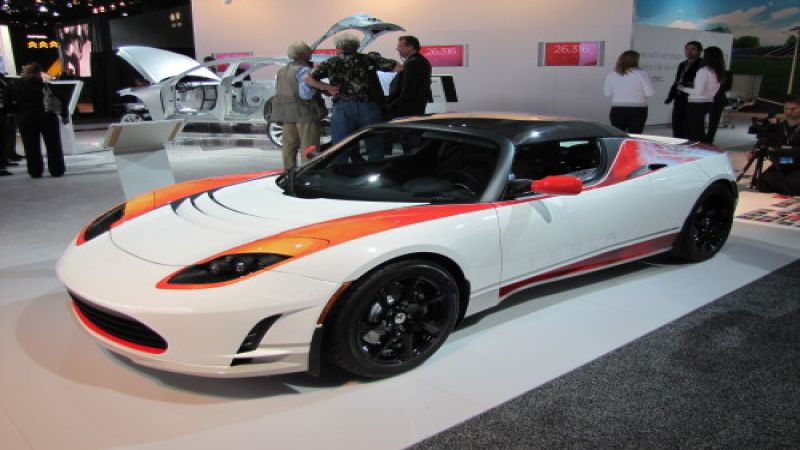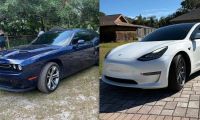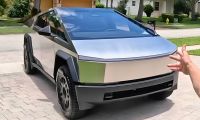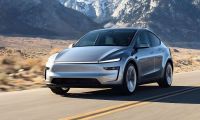Electric cars now permeate every auto show in the world. Recall the North American International Auto Show (NAIAS) in Detroit last January. And witness the large Electric Avenue display with a Ride & Drive feature in the basement of Cobo Center.
For the auto sector stock record, notice that all of the companies mentioned are pubclicly traded as well. Think Ford (NYSE: F), General Motors (NYSE: GM), Tesla (Nasdaq: TSLA) and Nissan (PINK: NSANY).
There must be a distinction, though, between full electrics and those with internal combustion or equivalent engines. Full electric rely solely on battery power. Once the power is gone, there no way to drive the car except to recharge; no different than running out of gasoline.
On the other end of the spectrum you have the hybrids. Even there, distinction must be made. For example, the Toyota Prius is a hybrid, but it uses the electric drive in parallel with a small IC engine. Point is, the IC engine drives the wheels directly as does the electric motor.
The Chevrolet Volt brings a unique engineering approach to the mix. The Volt is a true electric vehcile. The only difference between it and the Nissan Leaf and the Tesla is that the engine is serial; meaning it is used merely to recharge the batteries, never to drive the wheels directly. In this respect, the engine is considered range extending.
Taken to the next phase of tech evolution, the Chevy Volt has the potential to replace its range extending engine with ore efficient powerplants, including nat-gas, diesels, split-cycle air hybrid of Scuderi and external combustion like the steam engine of Cyclone Power.
The next stage will need to extend driving range. Some technology will have to include ultra-capacitors. These store and release energy at a much higher rate that lithium-ion batteries.
Likewise, electrolytes need to be improved so as to increase the rate of charge and discharge. The zinc-air battery has the most potential to reduce cost as well as increase energy density, especially with nano-scaled electrode materials.
The hydrogen fuel cell, though, seems to be the best overall balance between energy, supply and infrastructure. Having driven the GM Hydro-Gen, I dare say the experience was quiet but powerful and impressive.
Prices are high right now for all EV cars, but with broader adoption and increased demands, EVs will become more competitively priced over time; at least hopefully. Fact is, if it doesn’t, more efficient power plants will compete on price and efficiency like the Scuderi and the Cyclone engine technologies. So, the industry best wake up that fact, unless they plan on hiding those technologies.
Now for a dose of reality. Those early adopters are not as clean as they want themselves and others to believe. It’s not all their fault, though. Fact is, a coal-fired electric plant is likely providing the energy to recharge the electric vehicle, demonstrating a simple truth: there is no vehicle that is absolutely environmentally neutral.
Still, thank an early adopter, because our automotive future depends on them right now.
---------------------------------------------------------------------------
More About the Reporter: After 39 years in the auto industry as a design engineer, Frank Sherosky now trades stocks, futures, and writes articles, books and ebooks via authorfrank.com. He may be contacted here by email: [email protected]
________________________________________________
Additional Reading:
GM needs to close Detroit plant to boost Chevy Volt production
Stock Chart of the Day: LinkedIn (NYSE: LNKD) IPO trades with full volatility and a 93.86 close
Transamerica Center for Retirement Studies implies working as only solution for auto workers
AeroVironment and NRG Energy to provide EV fast charging stations in Texas
50 mpg needed as gasoline futures nears old 3.63 high












Comments
Good article until the end,
Permalink
Good article until the end, when the writer tells Volt owners they aren't as clean as they'd like to be because of coal pollution.
However, the whole coal thing is a red herring. Here's why coal doesn't matter:
First, not all the energy on the grid is coal – and EVs are more efficient than gas cars. So in general you will burn far less dirty fuel per miles driven in an EV – which means far less overall pollution than your gas burner makes.
But there are two even better arguments to be made. First of all, coal plants are baseload. This means they run all the time at or near full output. Plugging in an EV can’t make them run any faster (other, peak plants come on line instead.) Coal plants can’t be peak plants because it takes days to ramp a coal plant up to full power – peak plants have to respond quickly. So coal pollution simply has no room to increase much – meanwhile, gasoline pollution goes to zero.
But here's the best argument: It takes huge amounts of electricity and other energy to refine gasoline. Enough energy that you could throw away the gasoline and drive an EV around on just this energy.
So we are all essentially driving around in EVs already - but burning gasoline at the same time. Clearly the EV has the green advantage here.
The "fact is" that many
Permalink
The "fact is" that many people who are using their Volts and Leaf's can be net neutral. Some of those same early adopters that are buying electric cars have also adopted something else, solar. With solar on your house you are basically charging your car directly from the sun! And the potential combinations for what you can do with solar energy are staggering. Hell, if you wanted to you could use solar to electrolyze water, and compress the heydrogen that is created in that process and feed that into your car when you needed it.
I agree with the comments above, the coal thing is a red herring because its all about the potential of the grid to be clean which ICE cars can never be.
The Volt information is
Permalink
The Volt information is incorrect. The gas engine does drive the wheels in many situations. GM has gone to great lengths to cover up this fact. The Volt is a hybrid and will burn gasoline without your knowledge... until you get a low fuel light that is.
Not many situations, in fact
Permalink
In reply to The Volt information is by Anonymous (not verified)
Not many situations, in fact one situation - over 70mph, once the battery is exhausted. And it is just helping the electric motor, which is driving the wheels at the same time.
It simply can't do this at lower speeds, the car has a very simple transmission not suited for a gas engine.
I'm sure the decision to do this has disappointed some purists, but it undoubtedly made sense from an engineering perspective.
If this really bothers you, set your cruise control to 68.
I'm one of those people with
Permalink
I'm one of those people with solar panels on my roof. Had them installed 2 years ago in NY (array of Sharp 225W panels) and I generate more power than I use. That's including 2 zones of central a/c, electric dryer & stove, lights, tv's computers, etc.).
If I can do this from a simple roof installation in northeast NY, imagine what sun-filled states like Florida, New Mexico, Arizona, Nevada, Texas, Louisiana etc. etc. could do. It's absolutely shameful that all that potential is wasted, while at the same time coal, gas and imported oil are being used instead (sending American money overseas, increasing our trade debt, etc.).
I got my Volt a few weeks ago and driving 70mph on the highway off of nothing but sun (have yet to put a drop of gas in it). I'm not only as clean/green as I think I am, I'm spotless :). To all the doubters out there, wake up. The age of solar being a practical source of energy in the real world is finally here.
@JP White It wasn't cheap,
Permalink
@JP White
It wasn't cheap, but I got a $35K rebate from my utility (LIPA) as well as a 30% deduction off my taxes. My electric bill used to be easily over $600/month, now I pay nothing- payback period is about 7 years depending on how much future rates rise (after that it's all gravy). Since I put mine in, the price of panels has fallen 30%. The utility rebate money isn't available anymore (there's a new program where they pay you by the watt), but the federal tax deduction is.
I've got 72 Sharp 225W electric panels -figure about $40K to buy -add costs of inverters ($6K), accessories/materials ($4K) & installation ($10K) and today my setup would run around $60K.
It's an upfront investment I'm happy to pay to be worry free about utility rates going up, knowing I'm CO2 neutral and knowing I'm not increasing the demand & price of oil/supporting dictatorships/rogue nations/contributing the trade deficit, etc.
Nissan are installing 30
Permalink
Nissan are installing 30 solar powered charging stations for the LEAF at their headquarters in Nashville (the government is picking up part of the tab).
It seems to me the way forward is to migrate to solar powered charging stations away from the grid. This will also open up the potential to install charging stations in remote areas in addition to more traditional locations.
JP